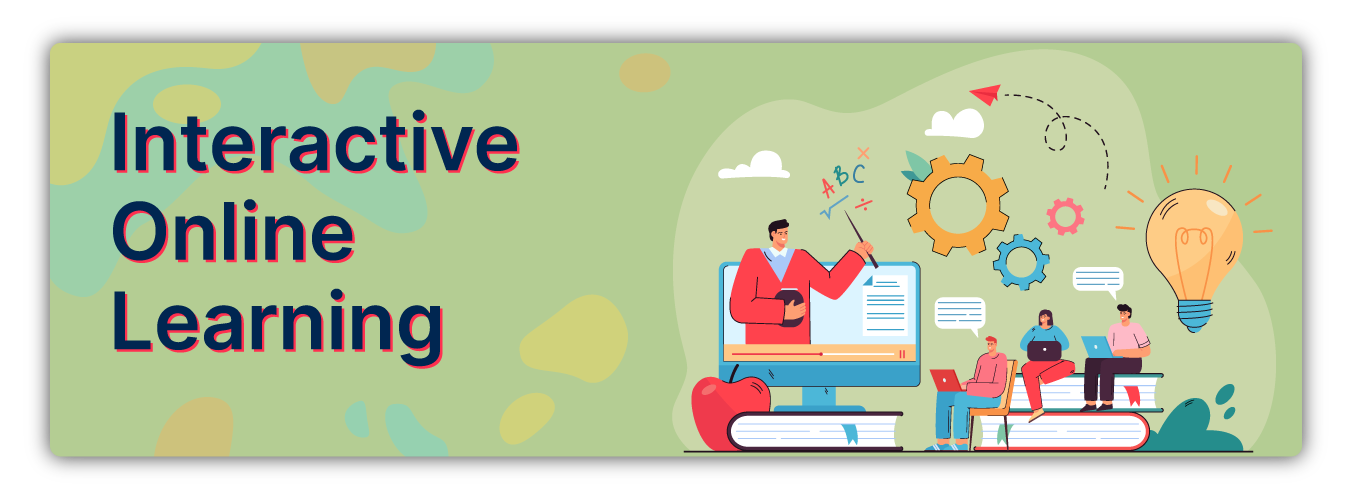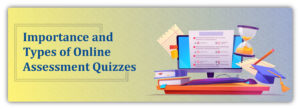The teaching learning process is not confined to the four walls of a classroom anymore. It is gradually becoming an all inclusive process that incorporates numerous aspects of student learning. Therefore, the entire teaching learning process is shifting towards online learning as an effect of this age of digitalization. The biggest reason behind this shift is that online learning brings in better learning opportunities. Learners have a plethora of subjects to choose from the pool of knowledge that the Internet has become. Moreover, e-learning also helps refine the teaching learning process in many ways. This blog gives a detailed account of interactive online learning.
What is Interactive Online Learning?
In contrast to traditional learning, interactive online learning incorporates the use of technology to educate the learners. Students learn through different means with the help of videos, presentations, images, and even online quizzes. Interactive learning lessons work best to engage the learners and render experiential learning for better understanding. Learners are active participants in the learning process rather than being passive recipients. There are numerous ways to create student engagement with online learning. Some of them are as follows:
a) Ask the learners to give feedback to know if the interactive learning method is catering to their learning needs.
b) Offer a plethora of topics and courses to choose from.
c) Provide options for sharing with others and commenting views.
d) Make use of gaming elements like scoreboard, timers, etc.
e) Invite learners to contribute their knowledge.
f) Encourage peer evaluation so as to create a sense of competition among the learners.
What are its Principles?
Interactive online learning is a result of planned and systematic developmental processes. Mentors and instructional designers must be aware of the various principles of interactive online learning in order to create effective courses. The principles of online learning should align with the type of communication or any activity that facilitates the e-learning process. The major principles of interactive online learning are as follows.
A. Setting the stage
An effective online learning lesson is the one that engages the learners from the beginning till the end. It is essential to grab the attention of the learners in the beginning to achieve the objectives of learning. So, teachers can use various strategies to set the stage for learning. Some of them are:
- Asking questions that provoke thoughts
- Sharing insightful statics or facts
- Using engaging learning activities
B. Communicate the learning objectives
Communicating the objectives of online learning lessons has a great impact on the learners and their learning. It clarifies what is there for the learners in the course. So, the communication can be through slides or in any other format that conveys the objectives clearly.
C. Link with learner’s existing knowledge and skills
A recall of the previous learning helps learners connect the concepts and gives a sense of confidence as they go through the new online learning material. So, the best way to check the previous knowledge of learners is to conduct a test. These tests can be in the form of MCQs, online quizzes or any online or offline format.
D. Use visualization for content structure
Using images, graphics, tables, and more helps easy and effective delivery of new information, knowledge or skills. It also makes it easier for the learners to grasp concepts and retain them for a longer time span. However, teachers must ensure that the arrangement of contents is such that it does not overwhelm the learners. Therefore, organization and sequencing of the content reasonably affects information absorption.
E. Make use of learning tools
Learning, when supplemented with the right tools, can develop skills and facilitate easy and quick learning. Giving real-life examples, guiding students through the online learning resources helps facilitate learning. Also, using supportive objects like infographics, concept maps, case studies and more can help facilitate effective learning.
F. Provide feedback
Providing immediate feedback helps learners improve their learning, knowledge and skills. So sharing honest and positive feedback helps learners identify their mistakes and improve learning. Also, praising the learner for doing the right thing makes online learning more appealing.
G. Conduct regular assessments
Assessments play an important role to assess student learning levels. Students go through comprehensive assessment tests or online quizzes and achieve a score. Interactive online learning also offers several effective ways to assess students. Thus, teachers can create drag and drop question-answers, online quizzes, MCQs and other forms of assessment easily.
H. Knowledge retention & transfer
Interactive learning improves student knowledge and facilitates retention and easy transfer of knowledge. Also, teachers can share valuable resources like instruction manuals, guides, catalogues, and other such materials for students’ reference. Students can refer to the material at any time and recall what they have learned.
How to Make Learning More Interactive?
Online learning can be made more interactive by adding several interactive elements in the course material. The following are some of the ways to make online classes more interactive:
1. Offer Flexibility
Flexibility in the availability of study material and its accessibility for the learners is of utmost importance in creating interactive online learning. Therefore, teachers must provide readily available online study materials which the students can revisit any time.
2. Leverage the Storytelling Method
Storytelling is one of the oldest and the most effective ways of teaching. It also provides several benefits that help make lessons more attractive yet simple. These benefits include instilling values among the learners, improving their listening skills and aiding retention.
3. Regularly Check Student Progress
Regularly checking the progress of studnets helps understand the earning levels and identify the learning needs and requirements. Similarly, in an online classroom, checking student progress through online quizzes and tests provides insights into the effectiveness of the lessons and online course.
4. Use Gaming Elements
Adding game elements to online learning lessons makes them more interactive and allows effective learning. Also, rewarding students for their hard work helps motivate them to perform better. Another benefit of using this method to make online learning more interactive is that it creates a sense of healthy competition among the students.
Final Note
Interactive online learning is an effective teaching learning process that facilitates learning as well as better retention. At times when learning becomes overwhelming for students in a traditional classroom, interactive learning makes it more interesting and fruitful. It also ensures active participation and increases productivity.


